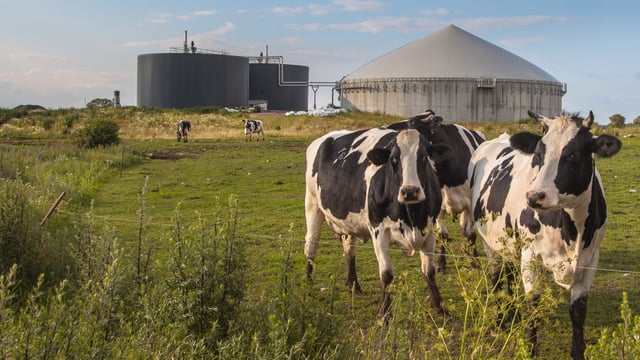Researchers develop 'cost-effective' ammonia sensor for farmers
Researchers at University College Cork (UCC) have developed a groundbreaking new sensor that they say significantly advances the detection of ammonia pollution in real-time.
This technology is aimed at transforming environmental monitoring, removing the cost barriers to farmers and supporting the enhancement of sustainable farming practices.
Efficient detection of ammonia (NH3) is essential for reducing air and water pollution, safeguarding human health, promoting sustainable agriculture, and shaping climate and environmental policies, according to the research team.
Current technologies for NH3 measurement include spectroscopic techniques and sensors that can be expensive, bulky, and impractical for widespread or field applications.
The new silicon nanowire sensor developed by UCC researchers is described as a "promising alternative".
This breakthrough is a result of the EU-funded RADICAL project led by UCC, with the findings published in the journal ACS Applied Materials & Interfaces.
The team has stated that the nanowire sensor is sensitive and precise, consumes minimal power, and operates at room temperature, allowing for real-time air quality monitoring.
As the sensor design is compatible with existing technology, it is said to be cost effective and simple to produce.
It reportedly can also quickly and reliably detect ammonia, even in small amounts, and provide a portable solution for use in diverse environments.
Ammonia pollution primarily originates from agricultural activities and poses significant environmental and health risks.
In Ireland, where agriculture plays a major role, ammonia emissions are a critical concern. Urban sources such as vehicle emissions also contribute.
Once in the atmosphere, ammonia reacts with acidic gases to form particulate matter (PM2.5), which is harmful to human health and can lead to respiratory and cardiovascular diseases. Direct exposure can irritate the skin, eyes, and lungs, the research team has said.
Environmentally, excess ammonia causes water pollution, leading to algal blooms and eutrophication, which harm aquatic life. It also impacts air quality and climate.
Dr. Vaishali Vardhan, lead author of the paper said: “This new sensor is a powerful tool for both air quality monitoring and research. It is low in cost, small, and suitable for large-scale deployment.
"What distinguishes our technology is the use of bare silicon nanowires - avoiding complex hybridisation techniques - which makes the sensor more affordable and scalable.
"The integration of UV light further boosts its sensitivity, enabling efficient detection of ammonia at low concentrations."
RADICAL project coordinator, Prof. Justin Holmes added: "This pioneering technology is set to revolutionise environmental monitoring in the agricultural sector.
"It will allow farmers to make more informed decisions, benefiting both their businesses and the environment as a whole."





